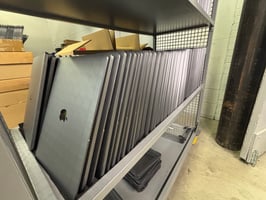Your Surplus Technology Isn’t Trash - It’s a Hidden Asset When organizations think about surplus IT...
How Effective ITAM Reduces Total Cost of Ownership (TCO)
In today’s technology-driven business environment, IT spending is one of the largest operational expenses for most organizations. Yet many companies lack full visibility into where their IT dollars go and how to reduce unnecessary costs.
That’s where IT Asset Management (ITAM) comes in.
An effective ITAM strategy doesn’t just keep track of assets; it drives significant cost savings, risk reduction, and ROI by optimizing the entire asset lifecycle. In this guide, we’ll explore how a well-structured ITAM program helps reduce your Total Cost of Ownership (TCO) through three key pillars: cost visibility, license optimization, and asset reuse.
💡 Understanding Total Cost of Ownership (TCO)
Total Cost of Ownership (TCO) refers to the complete cost of acquiring, using, maintaining, and disposing of IT assets throughout their lifecycle.
TCO includes:
-
-
Direct costs: Purchase price, licenses, support, and maintenance
-
-
-
Indirect costs: Downtime, inefficiency, compliance risks, and disposal fees
-
Without structured ITAM, these costs are often fragmented across departments, leading to overspending, asset duplication, and compliance gaps.
A mature ITAM program consolidates this view, enabling businesses to analyze and optimize every dollar spent on IT assets.
📊 1. Cost Visibility: Seeing the Full Financial Picture
The first step toward reducing TCO is knowing what you own and what it costs to operate. Many organizations underestimate how much money is tied up in idle devices, unused software licenses, and untracked assets.
How ITAM Improves Cost Visibility:
-
-
Centralized Inventory: ITAM systems create a single source of truth for all hardware and software assets — including purchase dates, costs, and usage data.
-
-
-
Spend Tracking: Finance and procurement gain transparency into IT expenditures across departments.
-
-
-
Lifecycle Reporting: Visual dashboards track assets from acquisition to disposal, showing depreciation and maintenance costs over time.
-
🧾 2. License Optimization: Managing Software Spend and Compliance
Software often represents a large portion an organization’s total IT budget, but much of it is wasted on unused or duplicate licenses. Effective ITAM incorporates Software Asset Management (SAM) to ensure optimal license utilization and audit readiness.
How ITAM Reduces License Costs:
-
-
Usage Tracking: Identify unused or underused licenses to rightsize subscriptions.
-
-
-
Vendor Compliance: Maintain accurate entitlement data to avoid penalties and audit fines.
-
-
-
Renewal Management: Automate alerts for upcoming renewals and eliminate shadow IT.
-
-
-
License Reallocation: Reassign software from departed employees or retired hardware to active users.
-
🔁 3. Asset Reuse and Lifecycle Extension: Maximizing Value
Extending the life of your hardware assets is one of the most impactful ways to lower TCO. Proper maintenance, timely upgrades, and secure redeployment of existing assets reduce both capital expenses and e-waste.
How ITAM Supports Lifecycle Extension:
-
-
Preventive Maintenance: Scheduled servicing keeps assets performing efficiently longer.
-
-
-
Asset Reuse Programs: Redeploying devices within the organization minimizes new purchases.
-
-
-
Refurbishment & Resale: Decommissioned equipment can be refurbished or sold through certified ITAD channels.
-
-
-
Sustainable Disposition: Partnering with responsible recyclers avoids environmental fines and supports ESG goals.
-
🔗 The Strategic Value: ITAM as a Cost-Control Powerhouse
Beyond direct savings, ITAM offers strategic financial control and risk mitigation benefits that compound over time:
-
-
Better budget forecasting and IT planning
-
-
-
Cross-department collaboration between IT, finance, and procurement
-
-
-
Reduced security risks through accurate inventory and data governance
-
-
-
Enhanced sustainability reporting for ESG compliance
-
By turning ITAM into a continuous improvement process — not just an annual audit — organizations gain long-term cost stability, security, and operational efficiency.
Final Thoughts: Reducing TCO with a Smarter ITAM Strategy
Effective IT Asset Management is more than a tracking exercise; it’s a financial discipline that directly impacts profitability.
By improving cost visibility, optimizing software licenses, and extending hardware lifecycles, organizations can significantly reduce their Total Cost of Ownership while maintaining performance and compliance.
Bottom line: The more visibility and control you have over your assets, the less you spend, and the more value you extract from every device, license, and investment.
-min.jpg?width=50&name=Todd%20Leach%20(Default%20-%20Output%202)-min.jpg)

.png?height=200&name=Untitled%20design%20(1).png)
-min.jpg?width=50&name=Ron%20Helmer%20(Default%20-%20Output%202)-min.jpg)
